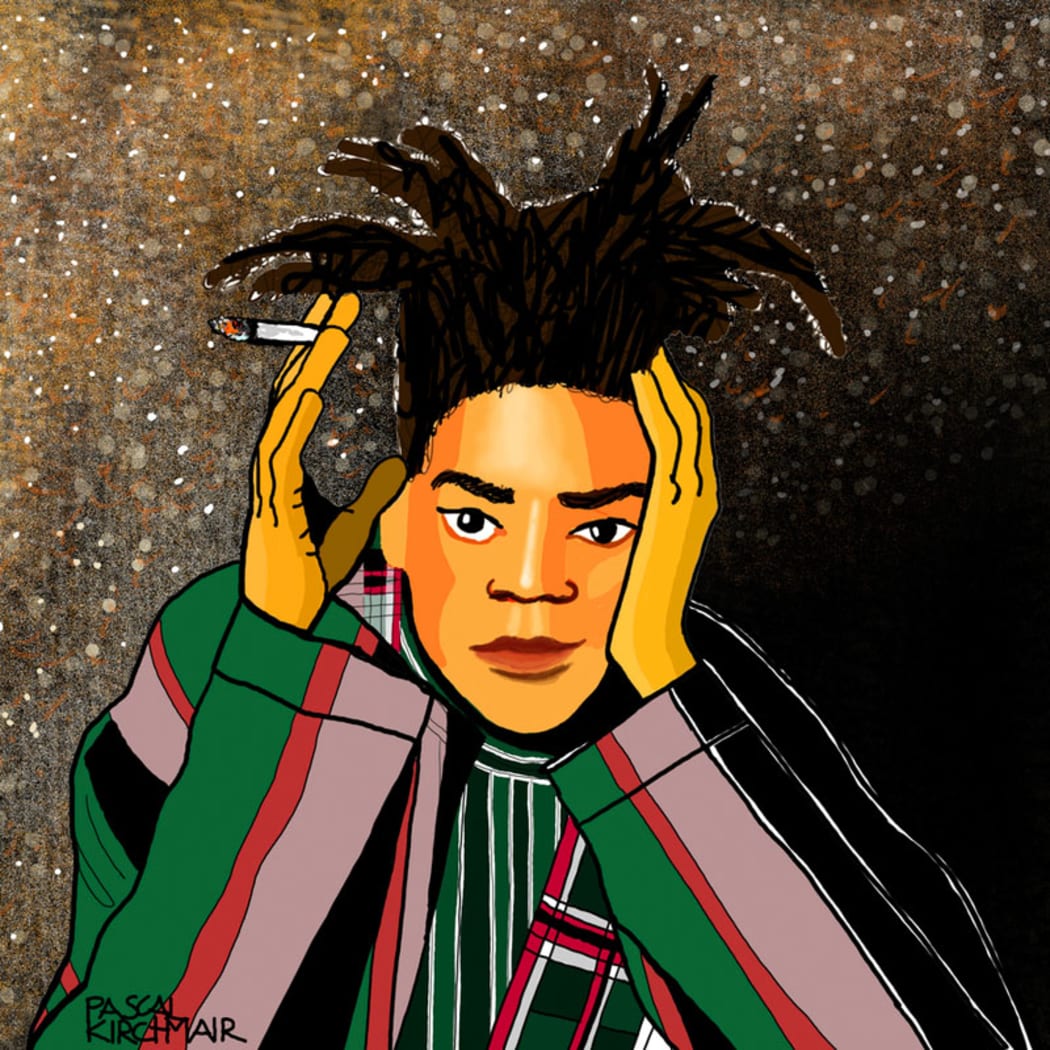Jean-Michel Basquiat was a unique, unruly talent whose ‘perfect storm’ of a career defined New York's infamous downtown celebrity art scene of the 1980s, says his biographer.

Jean-Michel Basquiat Photo: Wikicommons
Basquiat died of a drug overdose in 1988 at the age of 27, last month made headlines again when his 1982 neo-expressionist painting of a skull Untitled was sold for a record $US110.5 million bid at Sotheby’s, making it the most expensive artwork ever sold at auction.
Unlike many artists, Basquiat's paintings fetched high prices while he was alive, as he emerged at a time when financial deregulation (and the money that flowed from it) collided with music, street art fashion and celebrity, says Hoban.
His talent emerged early. As a boy, he was hospitalised after being hit by a car and his mother gave him a copy of Grey’s Anatomy which he started to sketch from. The accident also left him without a spleen, which would have consequences later when he became a drug addict.
Basquiat went on to become part of the early graffiti movement with his friend Al Diaz, although he a very different approach.
"Typical graffiti artists did what was called 'bombing'. Whole trains sprayed like big comic strips. They had tags, they worked themselves up through almost a hierarchy of graffiti, but Basquiat never did that.
“He never sprayed trains, he didn’t usually work in colour. He and Al Diaz went all over the city, but particularly Soho and the East Village where there were galleries, and wrote these very cryptic, poetic lines taken from this faux religion they had made up.”
Their anti-bourgeois messages took aim at the well-to-do class Basquiat's father was a part of.
![[no caption]](https://media.rnztools.nz/rnz/image/upload/s--WC2mJ5ou--/c_scale,f_auto,q_auto,w_576/v1643695016/4OCUDIV_copyright_image_111656)
Photo: Lee Jaffe
Basquiat's involvement with drugs began at school, Hoban says.
“He smoked pot as a high school student all the time and very publically started using heroin in the early '80s when he first got some real money.”
New York of the early 1980s was a perfect place for Basquiat as Wall Street money was poured into the hip art sold at funky, downtown galleries. He hung out with Andy Warhol, Keith Haring and David Bowie.
“Basquiat was at the right place, at the right time and he was talented.”
A Times Square show in 1980 was his breakthrough, says Hoban.
“[It was] a really unruly show in a former massage parlour and that initially put Basquiat on the map.”
He craved fame along with success, she says.
“His dealers became his enablers. They often paid him in cash and they were well aware he was an addict. They took full advantage of him, but he was complicit. He wanted to be famous and he was willing to pay the price.”
Hoban believes Basquiat's work stands up today and has aged better than that of his contemporaries.
“I think his work would have evolved if he hadn’t been a junkie … His art gets better with time and looks better compared with art of the period.”

